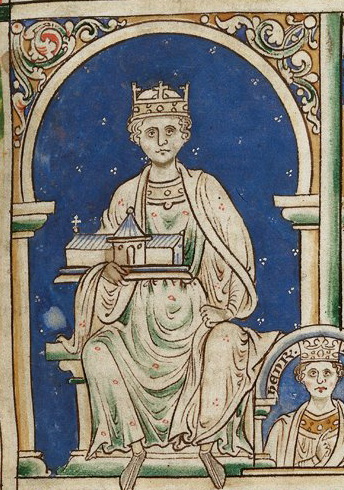Assize of darrein presentment on:
[Wikipedia]
[Google]
[Amazon]
 In
In
''The History of English Law Before the Time of Edward I''
The Lawbook Exchange Ltd. 2nd edition. 30 September 1996. . {{use dmy dates, date=January 2016 1179 in England 1179 12th century in law English laws
 In
In English law
English law is the common law legal system of England and Wales, comprising mainly criminal law and civil law, each branch having its own courts and procedures.
Principal elements of English law
Although the common law has, historically, b ...
, the assize of darrein presentment ("last presentation") was an action brought to determine who was the last patron to appoint to a vacant church benefice
A benefice () or living is a reward received in exchange for services rendered and as a retainer for future services. The Roman Empire used the Latin term as a benefit to an individual from the Empire for services rendered. Its use was adopted by ...
- and thus who could next appoint - when the plaintiff complained that he was deforced or unlawfully deprived of the right to appoint by the defendant.
Origins
In theConstitutions of Clarendon
The Constitutions of Clarendon were a set of legislative procedures passed by Henry II of England in 1164. The Constitutions were composed of 16 articles and represent an attempt to restrict ecclesiastical privileges and curb the power of the Chur ...
of 1164, Henry II of England
Henry II (5 March 1133 – 6 July 1189), also known as Henry Curtmantle (french: link=no, Court-manteau), Henry FitzEmpress, or Henry Plantagenet, was King of England from 1154 until his death in 1189, and as such, was the first Angevin kin ...
laid down the principle that “If a dispute shall arise...concerning advowson
Advowson () or patronage is the right in English law of a patron (avowee) to present to the diocesan bishop (or in some cases the ordinary if not the same person) a nominee for appointment to a vacant ecclesiastical benefice or church living, a ...
and presentation to churches, let it be treated and concluded in the court of the king”. While a controversial element in his (generally controversial) demarcation of church and state, in practice advowsons remained lay property in England; and some time after the 1166 Assize of Clarendon
The Assize of Clarendon was an act of Henry II of England in 1166 that began a transformation of English law and led to trial by jury in common law countries worldwide, and that established assize courts.
Prior systems for deciding the winning ...
- probably around 1179 - Henry introduced the writ of Darrein Presentment, to provide a speedy judgement in cases of advowson dispute.
The 3rd Lateran Council of 1179 required that the local bishop appoint to church vacancies that had lasted longer than three months, thus injecting a new urgency into disputes over the right of presentation. By having a jury decide who had last presented to the church in question (in peacetime), and giving them (or their heirs) the current right of presentation, the new writ offered a swift and popular solution to a much litigated area.
Development
*So popular indeed was the new assize thatMagna Carta
(Medieval Latin for "Great Charter of Freedoms"), commonly called (also ''Magna Charta''; "Great Charter"), is a royal charter of rights agreed to by King John of England at Runnymede, near Windsor, on 15 June 1215. First drafted by t ...
would provide for easier access in section 18, which stated that “Inquests of...Darrein Presentment shall not be held elsewhere than in the county in which they arise, and ...four times a year”.
*Legal complications arising from changes in the church tenure during the last holder's lifetime meant that Darrein presentment would eventually be supplemented by the action ''quare impedit
In English law, ''quare impedit'' was a writ commencing a common law action for deciding a disputed right of presentation to a benefice, a right known as an advowson. It was typically brought by a patron against a bishop who refuses to appoint the ...
''.
*Like the other two petty assizes, Darrein was finally abolished in 1833.
See also
References
Further reading
*Sutherland, Donald W. ''The Assize of Novel Disseisin''. Oxford University Press. 21 June 1973. . *Pollock, Sir Frederick and Frederic William Maitland''The History of English Law Before the Time of Edward I''
The Lawbook Exchange Ltd. 2nd edition. 30 September 1996. . {{use dmy dates, date=January 2016 1179 in England 1179 12th century in law English laws